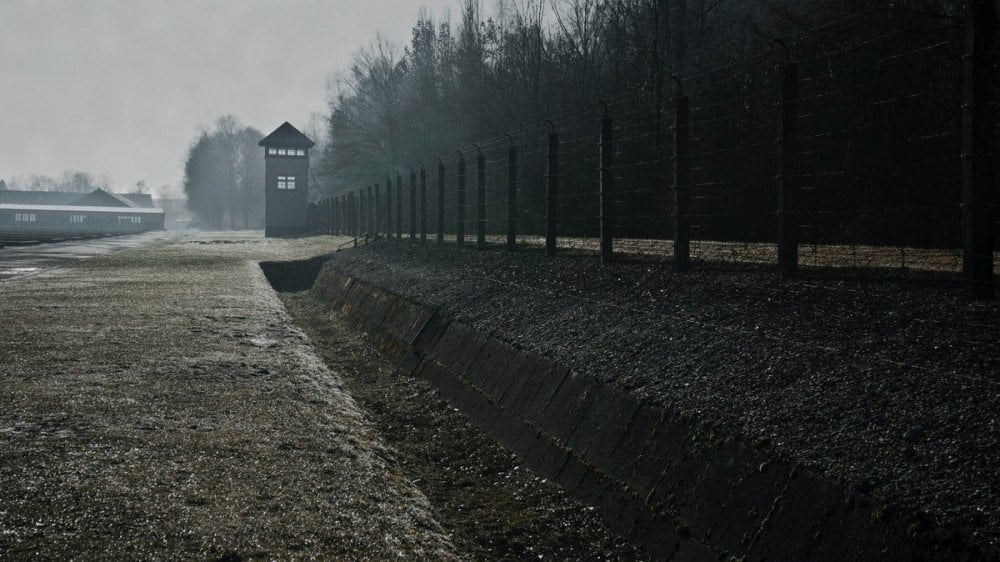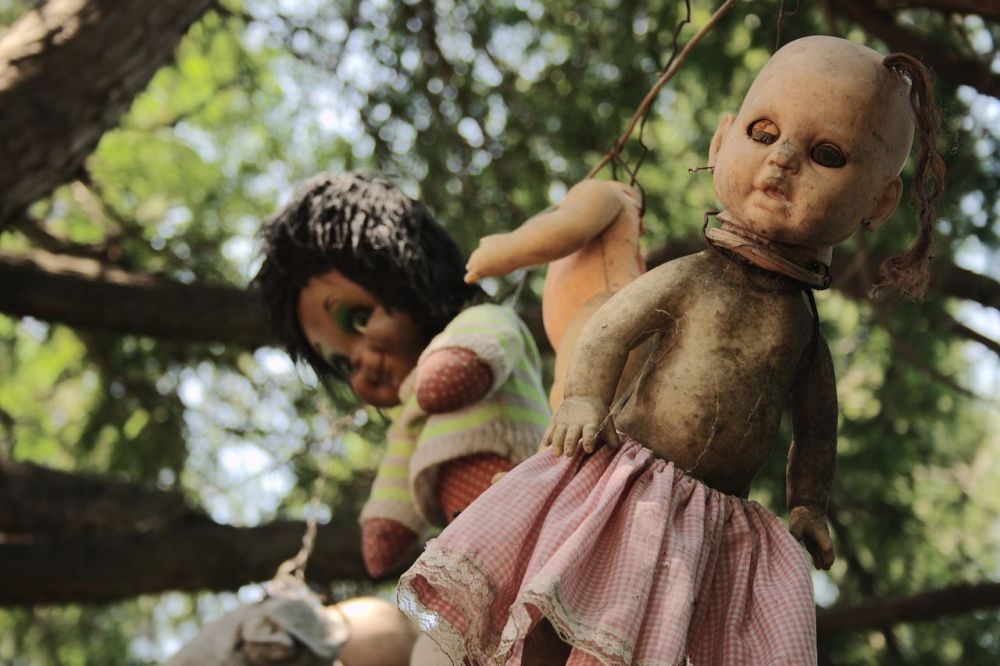Made famous by Netflix with the docu-series The Dark Tourist, dark tourism makes you question whether it is curiosity or morbidity. No one is immune from dark tourism because it includes almost all the historical sites. Our history runs through bloodshed and tragic events everywhere.
Table of Contents
What dark tourism is
Dark tourism, also known as grief tourism or thanaturism, is tourism associated with death or tragedy. As a type of tourism, it is very controversial. Some people consider it an act of respect, while others think it unethical. Dark tourism includes visits to memorials and death camps as well as macabre tours or sightseeing at sites of recent disasters.
Although the definition is recent, dark tourism has always existed. Already Thomas Cook, founder of the world’s first tour operator, organised trips to Cornwall to see the executions of those condemned to death. In recent years, dark tourism has returned thanks to television programmes. The Chernobyl series, for example, has led to a massive increase in bookings for guided tours of the exclusion zone in Pripyat.
The activities of dark tourism
The range of dark tourism includes various activities, from the lightest to the most intense. On the one hand, city mystery tours use historical curiosities and disturbing facts from the past as entertainment. At the other extreme of dark tourism, on the other hand, you can find highly visited places such as Auschwitz, Dachau, Chernobyl, or Ground Zero. Or even cemeteries, prisons or historical museums.
Dark tourism is not just morbid. It can contain an educational element associated with an authentic and touching experience. You have probably also visited a death camp or a prison and come out shaken. For me, the most brutal experience was at the Tuol Sleng Museum in Phnom Penh, visited to discover the recent Cambodian history.

The most popular destinations of dark tourism
Delving into dark tourism reveals various destinations, ranging from the obscure to the renowned. While some are unknown places, others are essential for comprehending the intricate tapestry of local history and culture.
Unveiling the stories behind these destinations offers a glimpse into their haunting narratives. Sometimes it provides a profound insight into the collective memory of the communities they represent, while others may be a morbid journey, but the traveller’s gaze always makes the difference.
1) Auschwitz Concentration Camp
After being the most extensive and deadliest Nazi concentration camp, the Auschwitz-Birkenau site became a memorial soon after the end of World War II. The Memorial and Museum Auschwitz-Birkenau is often cited as an example of dark tourism because it is estimated to have received more than fifty million tourists.
2) Chernobyl nuclear disaster
Chernobyl is a top-rated destination for dark tourism due to the burgeoning production of TV series and documentaries. However, Pripyat is still a dangerous area to visit due to the high levels of radiation present.
3) Hiroshima Peace Memorial
The city of Hiroshima was the first in the world to suffer a nuclear attack, and today promotes itself to the world as a symbol of peace. The number of visitors is always impressive. Most are the Japanese tourists who visit the Hiroshima Peace Memorial.
4) 9/11 Memorial in New York City
The 9/11 Memorial has very quickly become a significant attraction for dark tourism. Over ten million visitors have visited this site, commemorating one of the world’s worst terrorist attacks in the first two years since it opened. The 9/11 Memorial Museum tells personal stories of resilience and honor the memory of those whose lives were lost following the terrorist attacks.
5) The killing fields in Cambodia
Cambodian killing fields comprise more than three hundred execution sites active under the Khmer Rouge regime. More than one million people were executed and buried in mass graves at these sites. Today, the killing fields are popular destinations, and some are getting more tourists than the sites could sustain. During my trip to Cambodia, I only visited the Tuol Sleng Genocide Museum. This very moving place highlights the darkest moment in Cambodia’s history.
6) Bikini Atoll nuclear tests
In addition to Chernobyl, travellers interested in nuclear tourism go to the Bikini Atoll. Here, the United States conducted its nuclear test programme from 1946 to 1958. Although its safety was guaranteed in 1997, the Bikini Atoll remains an extremely dangerous place to visit. There is still a significant level of radiation in the area, while the damage caused below sea level has not been determined.
7) Robben Island Prison
Robben Island is a UNESCO World Heritage protected island in South Africa that welcomes thousands of tourists every year. Dark tourism here is linked to its prison because Robben Island was used as a prison as early as colonial times. Its most famous inmate is Nelson Mandela, who was imprisoned there during the Apartheid period. Today, most tour guides are former inmates who provide tourists with information on how the prison operated
8) The Rwandan genocide
One of the bloodiest episodes in African history took place in Rwanda in 1994, with the extermination of the Tutsi ethnic group at the hands of the Hutu population during the hundred days that the genocide lasted. Today, Rwanda is also visited as a destination for dark tourism and not only for nature tourism.
9) The Pompeii disaster
Pompeii has been a typical destination for dark tourism since its discovery. In more recent times, the dark fascination of death and life frozen in the eruption of Vesuvius attracted around two million visitors a year. Since the release of the film Pompeii starring Game of Thrones actor Kit Harington, the flow of tourists has almost doubled, making the Roman city compete with other better-known dark destinations.
10) The Island of the Dolls
The Island of Dolls is located in the canals of Xochimilco, south of Mexico City, and has been dubbed the ‘scariest place in Mexico’. The entire island is littered with hanging dolls, consumed by time and covered in cobwebs and insects. Previous owner Don Julian Santana Barrera started hanging dolls from trees to drive away the spirit of a girl who drowned years earlier.

Why dark tourism is so popular
Dark tourism appeals to the attraction for death that many people have. Tourists visiting these destinations want to experience a thrill in confronting death in a symbolic or tangible way. Dark tourism, despite the apparent morbidity and some extremes of selfies in historical places, is closely linked to educational tourism.
Visiting historical World War II sites, prisons, and death camps is not a pleasure trip. Still, these destinations can emotionally enrich visitors, educating them in peace and tolerance. Another interesting consideration is that no one is immune to this tourism. We have all found ourselves more or less consciously visiting places of death or tragedy.
For example, I do not consider myself attracted to the macabre. Yet, in Europe alone, I have visited the Dachau Memorial Site and the Chateau d’If prison, while in Asia, I went to numerous war sites in Thailand, Cambodia and Vietnam. You can find a dark key to almost every destination because wars and genocides have occurred everywhere over the centuries.
Documentaries and books on dark tourism
To learn more about why many tourists are attracted to dark places, you can watch The Dark Tourist on Netflix. In each episode, journalist David Farrier visits some popular dark tourism destinations. He tries to understand why they exert so much attraction.
If you prefer reading, I recommend a couple of interesting books that you can find on Amazon:
- Don’t Go There: From Chernobyl to North Korea by Adam Fletcher, one man’s quest to get lost and find himself in the world’s strangest places.
- The Dark Tourist: Sightseeing in the world’s most unlikely holiday destinations by Dom Joly.
Share your thoughts about dark tourism and destinations in the comments. Apart from the case of Chernobyl and those who purposely visit the site of a natural disaster, dark tourism is practically everywhere. , It’s up to us to delve into the history of places without getting carried away by their potential morbidity.
